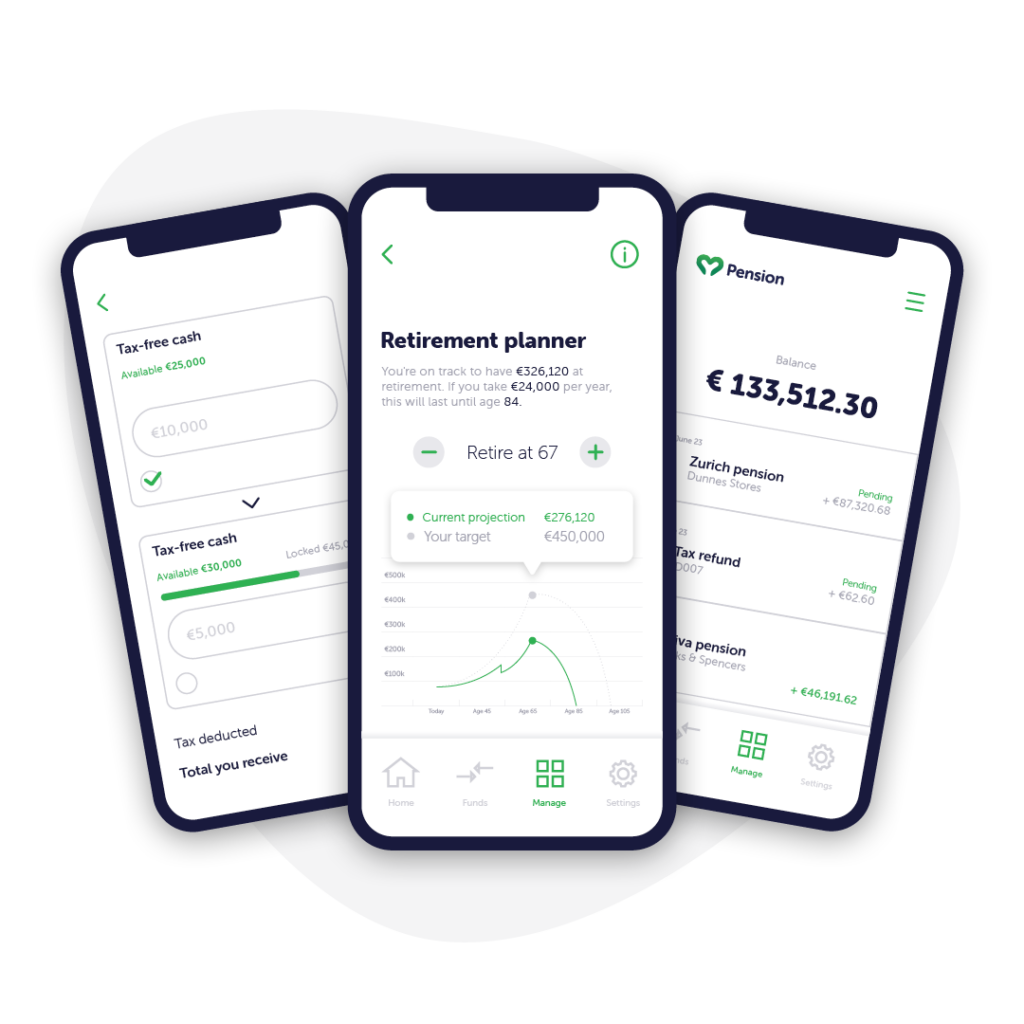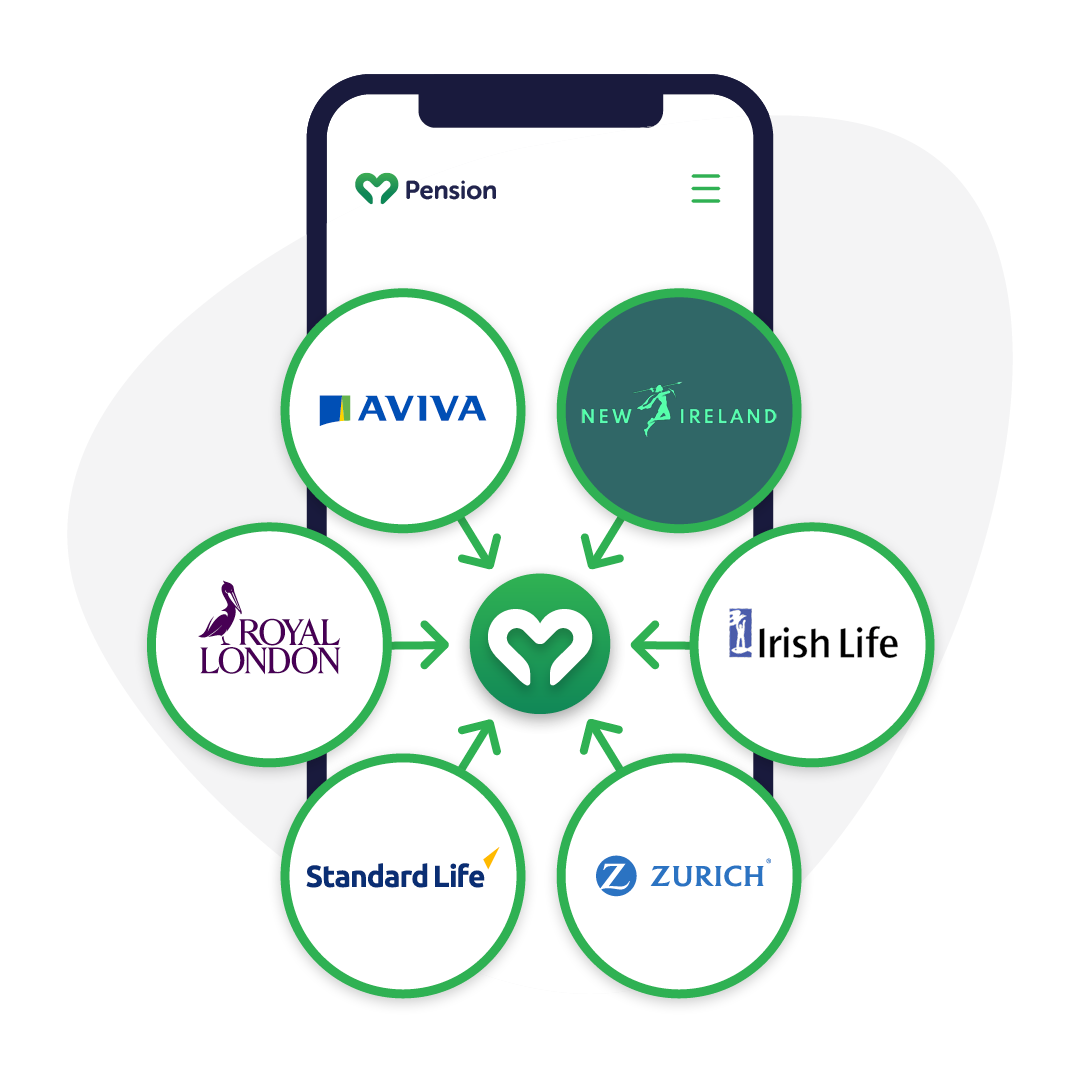Self Administered Pensions in Ireland
A Small Self Administered Pension Scheme or SSAPS, will generally have fewer than 12 members. SSAPS are usually set-up by companies for its Employees or Directors and provides its members more control over their investment vehicles.

What’s in this guide?
What is a Small Self Administered Pension Scheme (SSAPS)?
How do SSAPS work?
What are the benefits of a SSAPS pension?
Who can Set Up a Small Self-Administered Pension Scheme in Ireland?
Is a Small Self Administrated Pension Scheme right for me?
How to set up a SSAPS
Useful Links / Documents
Common Questions about SSAPS in Ireland (FAQ)
What is a Small Self Administered Pension Scheme (SSAPS)?
Small Self-Administered Pension Scheme also known as SSAPS are a pension scheme typically consisting of fewer than twelve members. This type of scheme is often set up by a company for an employee or director, allowing the individual greater control over the investment of their pension funds.
SSAPS are primarily used by proprietary directors of private companies—those who control or beneficially own at least 15% of the company’s ordinary share capital.
How do SSAPS work?
SSAP (Small Self-Administered Pension) provide company directors with the opportunity to maximize their pension funds before retirement by giving them full control over their investments. Unlike other pension schemes, directors have the autonomy to select and manage their investment choices directly.
Here are some examples of the types of investments that can and cannot be made with your SSAP. While these lists are not exhaustive, they provide an indication of the flexibility and range of investment options available under an SSAP.
It’s important to note that certain investments are subject to specific Revenue rules, which must be strictly followed.
Authorised
- Approved property
- Land
- Property syndicates
- Shares in private companies (subject to limits)
- Quoted equities on recognised worldwide
- stock exchanges
- Gilts, bonds and fixed interest stocks
- Investment trusts
- Unit trusts
- Insurance company funds
- Bank and building society deposits
- Offshore managed funds
- Futures and options
- Copyrights
- Loan notes
Prohibited
- Holidays homes with personal usage
- Shares in your principal employer
- Rare books and stamps
- Works of art and antiques
- Fine wines
- Loans to Member Trustees or their families
- Secured and unsecured loans to the principal
- employer or connected person
- Assets that could be used for member
- Trustees’ personal gain, e.g. golf membership
- Furniture and oriental rugs
- Yachts and vintage cars
- Jewellery and gem stones
- Gold bullion
- Connected party transactions
What are the benefits of a SSAPS pension?
The primary benefit of a Small Self-Administered Pension Scheme (SSAPS) is the control it provides over your retirement plan, making it an appealing option for those in specific situations. Unlike more common pension schemes, SSAPS offers a tailored approach, allowing you to actively decide where and how your pension investments are made.
For example, many people are drawn to the idea of buying property with their pension, a stable and tangible investment option. This control is particularly valuable for those in high-paying positions who prefer autonomy in managing their retirement funds.
Some key benefits of a SSAPS include:
- Enhanced Control and Flexibility: You have the freedom to decide how your pension funds are invested, giving you more control over your financial future.
- Transparency: All costs associated with the scheme are clear and straightforward.
- Portability: SSAPS is portable, allowing you to maintain control even if you change jobs.
- Customisable Payouts: You can choose how you receive your pension funds, whether as a lump sum or in scheduled payments.
- Confidentiality: The scheme’s terms are private and cannot be accessed by colleagues or other company members.
- Corporation Tax Relief: Contributions made by the company qualify for relief against Corporation Tax.
- Income Tax Relief: Members’ personal contributions are eligible for Income Tax relief.
- Tax-Free Investment Growth: Investments within the SSAP grow without being subject to Capital Gains Tax or Income Tax.
- Exemption from DIRT Tax: Deposits in the SSAP grow free from Deposit Interest Retention Tax (DIRT).
- Tax-Free Lump Sum at Retirement: A portion of the pension fund can be taken as a tax-free cash lump sum upon retirement.
- Transfer to an ARF: Any remaining balance can be transferred into an Approved Retirement Fund (ARF).
- Tax-Free Sum on Death Before Retirement: A tax-free lump sum may be payable if the member passes away before retirement.
In summary, SSAPS offer a highly customisable and tax-efficient way to manage your retirement savings, particularly suited for those who value control and flexibility in their financial planning.
Who can Set Up a Small Self-Administered Pension Scheme in Ireland?
In Ireland, any employee can set up a Small Self-Administered Pension Scheme (SSAP) with the permission of their employer. The key parties involved in a SSAP include:
- Member Trustee: This is you, the employee who has set up the SSAP. As the member trustee, you are responsible for overseeing the scheme. You have direct control over the investment strategy and the management of the pension funds.
- Employer: Your employer must consent to the establishment of the SSAP and may also contribute to the scheme on your behalf.
- Trustees: The trustees, which include you as the member trustee, are in charge of all aspects of the SSAP, including the investment decisions and the payment of retirement benefits. Trustees must ensure that the SSAP complies with legal and regulatory requirements.
In a SSAP, the trustees play a crucial role in managing the scheme to align with your retirement goals, making decisions that directly impact the growth and security of your pension fund.
Is a Small Self Administrated Pension Scheme right for me?
Given the benefits this scheme can provide for those who can utilise them, it’s well worth considering a Small Self-Administered Pension (SSAP).
Over 90% of all businesses in Ireland are small or medium-sized enterprises (SMEs), often run by owner-directors. For these owner-directors, a Small Self-Administered Pension (SSAP) should be considered a top choice for retirement planning.
An SSAP is established under trust by a company’s directors, offering them significant control and flexibility over their retirement savings and investment strategies. This structure allows owner-directors to tailor their pension plans to suit their specific financial goals, making it an ideal solution for those who value autonomy in managing their retirement funds, while availing of tax benefits.
To find out if a SSAP is right for you, speak with one of our Fianancial Advisors, today.
How to set up a SSAPS
Setting up a Small Self-Administered Pension (SSAP) in Ireland cosnists of 3 main steps:
- Funds
Establishing a SSAP requires significant time and effort, so you’ll need to have funds available or earmarked for contribution. It’s advisable to aim for a target opening value of €300,000 or more, which can come from existing pensions transferred into the SSAP, new company contributions, and contributions from your salary. The maximum contribution that can be made to an SSAP in any one year is determined by Revenue limits. MyPension can assist in calculating your contribution scope and help you plan your pension funding. - Investment Strategy
Developing a sound investment strategy for your SSAP is crucial. MyPension can help you appraise potential investments, determine a funding structure, and build a diversified portfolio that complements any core property holdings you might already have. We also offer ongoing performance monitoring to ensure your investments align with your retirement goals. - Open SSAPS Account
Once your investment strategy is in place, the next step is to handle the paperwork. Together with the pension trustee, MyPension will assist you in opening your SSAPS account. This includes preparing documentation for Revenue approval, appointing providers for banking and stockbroking, and ensuring all key requirements are met.
Contact MyPension today, to get started with your Small Self Administered Pension Scheme (SSAPS).
Useful Links / Documents

Pension Calculator
Find out your likely retirement income.
Find your old Workplace Pensions
Sign-up and find all of your pensions.
Common Questions about SSAPS in Ireland (FAQ)
Can I transfer my existing pension to a SSAPS pension?
Yes, an existing Executive Pension Plan can be converted into a Small Self-Administered Pension (SSAP) in Ireland. This option can be advantageous compared to establishing a new scheme.
Here are some important considerations when transferring a pension:
- When to Transfer:
Generally, you can transfer your pension fund to another pension scheme up to one year before you start receiving retirement benefits. Timing is crucial to ensure the smooth transfer of funds and to maximise the benefits of the new pension structure. - Transferring a UK Pension to Ireland:
If you’re transferring a UK pension to an Irish scheme, the transfer must occur before any payments are made, and the beneficiary must initiate the request. Both the UK and Irish pension schemes must permit the transfer. Ensuring compliance with the rules of both jurisdictions is essential to avoid potential tax implications or penalties. Find out more about transferring a UK pension to Ireland. - Transferring to an Overseas Pension Scheme:
If you’re considering transferring your pension to an overseas scheme, it must be a “Qualifying Recognised Overseas Pension Scheme” (QROPS). You can verify this status with either the overseas scheme or your UK pension provider. Transfers to non-QROPS schemes may result in significant tax charges. - Defined Benefit Pensions:
Transferring defined benefit pensions is more complex than transferring defined contribution pensions. Defined benefit pensions provide a guaranteed fixed income per year in retirement, and transferring such a pension may require careful consideration of potential benefits and drawbacks. It’s essential to consult with a financial advisor to assess the implications of transferring a defined benefit pension to an SSAP or another scheme.
What’s the difference between a SSAPS and a SIPP?
A Self-Invested Personal Pension (SIPP) and a Small Self-Administered Scheme (SSAS) are both pension structures, but they serve different purposes and are tailored to different types of users. Here’s a breakdown of the key differences between them:
Ownership
- SIPP: The entire pension pot is owned by the individual. All assets and investments within the SIPP belong solely to the individual, providing direct control over their retirement savings.
- SSAPS: SSAPSs do not have individual pots. Instead, the pension fund is collectively owned by the scheme members, with each member’s share defined by a percentage of the total scheme.
Control
- SIPP: The individual has full control over their investments, deciding where and how their pension funds are invested.
- SSAPS: Control is vested in the trustees of the scheme, typically the company’s directors, who manage the investments and overall strategy of the pension fund on behalf of all members.
Creation
- SIPP: SIPPs are created by SIPP providers or administrators and are designed for individual savers who want more control over their retirement investments.
- SSAPS: SSAPSs are established by employers specifically for their employees, offering a pension scheme that is closely tied to the business’s management and operations.
Membership
- SIPP: Typically, a SIPP is an individual pension product with one member—the owner.
- SSAPS: SSAPSs can have multiple members, with a maximum of 11 participants, usually involving key company personnel such as directors and senior employees.
Flexibility
- SIPP: While offering significant investment choices, the flexibility of a SIPP is generally limited to what the SIPP provider offers in terms of investment options.
- SSAPS: SSAPSs can offer greater flexibility, as the members (who are also trustees) have a say in how the scheme is run, allowing for a more tailored investment strategy that aligns with the business’s interests.
Tax Deductions
- SIPP: The costs associated with setting up and running a SIPP are typically borne by the individual from their pension pot, without direct tax-deductible benefits for a business.
- SSAPS: The costs of setting up and maintaining a SSAPS can be treated as a tax-deductible expense for the business, providing potential tax benefits to the company.
These differences highlight how SIPPs are more suited to individuals seeking control over their personal pension investments, while SSAPSs are designed for small business owners and directors who want to combine retirement planning with business operations.
How much can I contribute to my SSAPS?
The maximum contribution that can be made to an SSAP in any one year is determined by Revenue limits.
Age |
Percentage of earnings you can contribute |
Under age 30 |
15% |
30 to 39 |
20% |
40 to 49 |
25% |
50 to 54 |
30% |
55 to 59 |
35% |
60 and above |
40% |
MyPension can assist in calculating your contribution scope and help you plan your pension funding. Contact one of our Financial Advisors, today.
Take control of your retirement, with MyPension

View all your pensions in one place. MyPension allows you to easily manage your pensions, with features such as combining, contributing and making withdrawals. Your pension, in the palm of your hands.
Cathedral Financial Consultants Ltd t/a My Pension is regulated by the Central Bank of Ireland. With pension investments, your funds might fluctuate in line with investment market movements.
Client services
© Copyright 2025 Cathedral Financial Consultants Ltd t/a My Pension. Registered in Ireland No: 369995.



